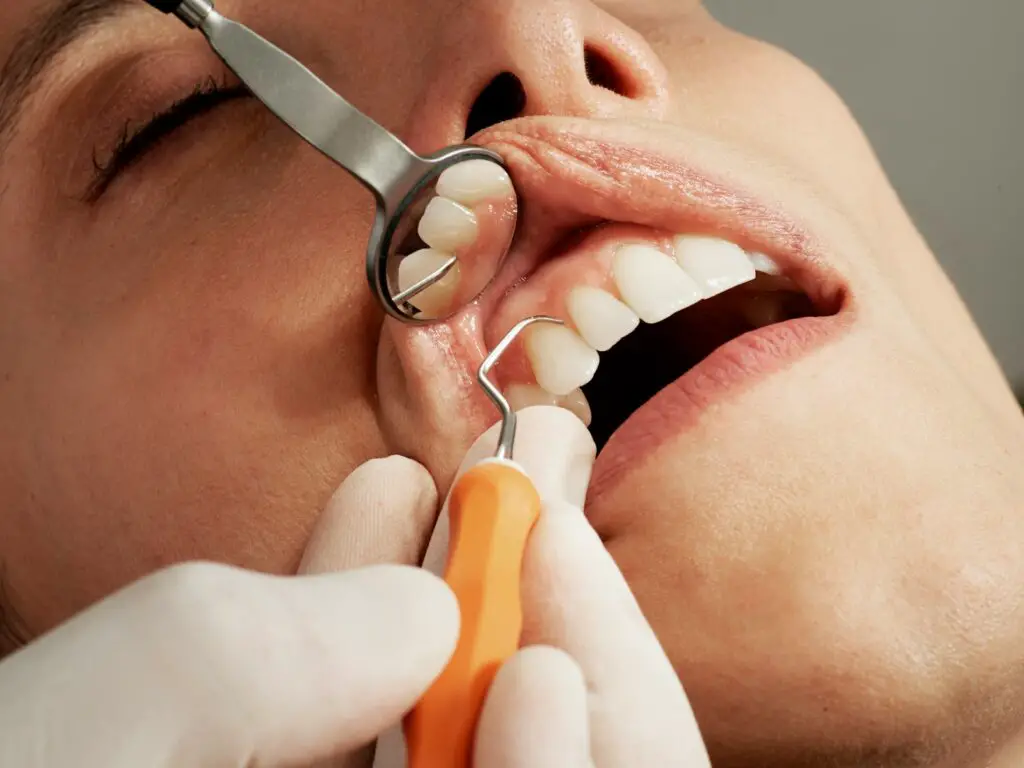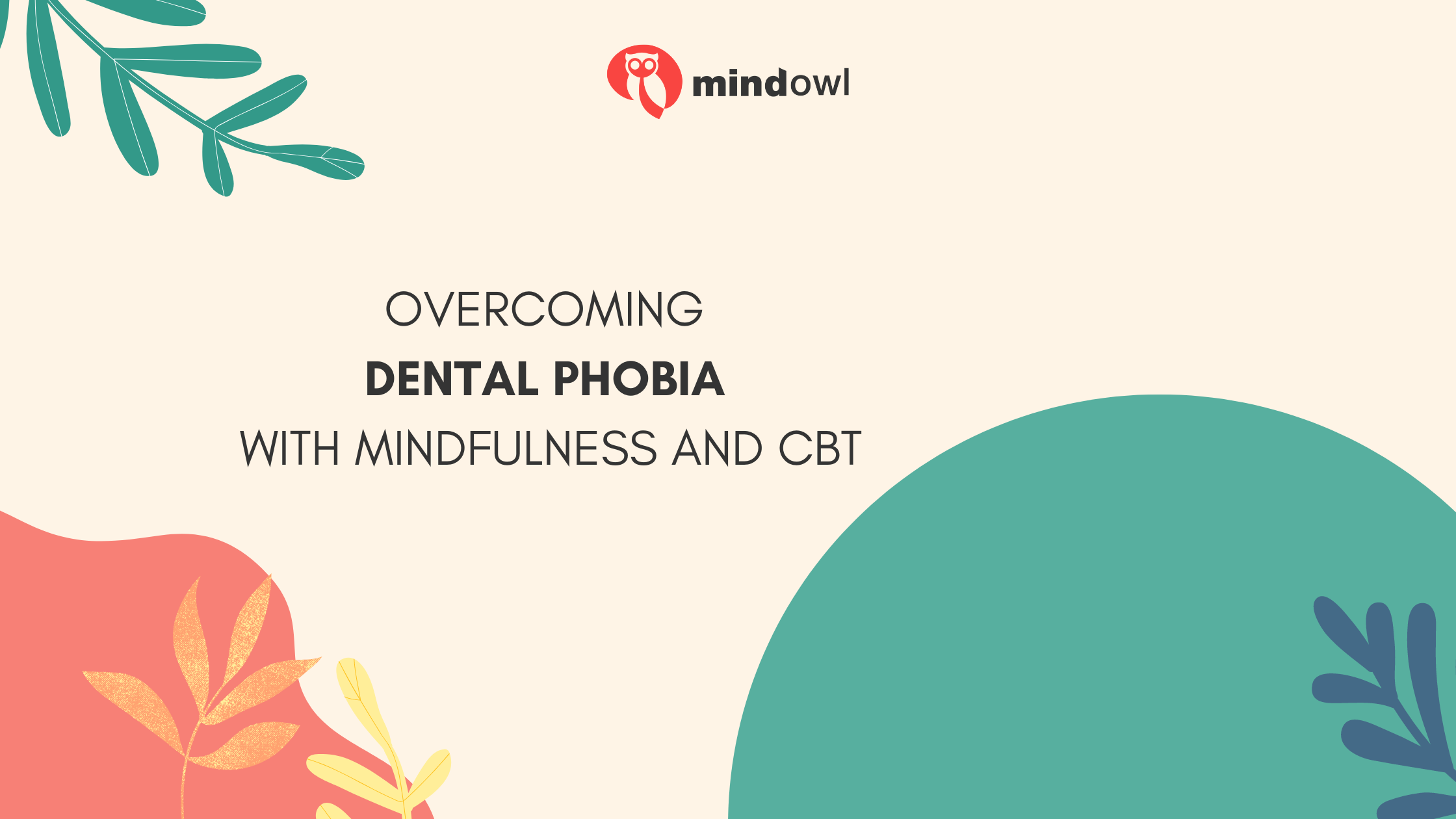Heading to the dentist can fill some people with dread. This fear, known as dental phobia, makes it tough for many to even pick up the phone and make an appointment. But what if there was a way to tackle this anxiety head-on, making dentist visits less scary? Interestingly, research shows that mindfulness and cognitive behavioural therapy (CBT) could be keys to unlocking a more relaxed visit to your tooth doctor.
Mindfulness involves focusing on the present moment without judgment, while CBT helps individuals understand and change their thought patterns related to fear. Our article will guide you through using these techniques before your next dental check-up.

Key Takeaways
- Mindfulness helps people focus on the present moment and reduce stress during dental visits.
- Cognitive Behavioural Therapy (CBT) changes negative thoughts about dentists into positive ones.
- Combining mindfulness with CBT has shown great results in lowering dental anxiety.
- Deep breathing, visualising peaceful places, and focusing on calming music are practical ways patients can use mindfulness during dental appointments.
- Success stories from studies highlight how using mindfulness and CBT together helps overcome dental phobia, making it easier for individuals to attend their dentist appointments without fear.
Understanding Dental Anxiety
Understanding dental anxiety is crucial for providing effective dental care. Recognising signs of dental anxiety and addressing concerns can significantly improve patients’ experiences at the dentist’s office.
Signs of Dental Anxiety
Dental anxiety can stop people from seeing their dentist. It’s more common than you think and comes in many forms.
- You avoid or delay your dental appointments – This is a classic sign. The thought of booking an appointment fills you with dread, so you keep putting it off.
- Feeling nervous or having trouble sleeping the night before a dental visit – You might find yourself tossing and turning, unable to get a good night’s rest because you’re anxious about your upcoming appointment.
- Getting increasingly tense while you’re in the dental office waiting room – The sound of the drill or the sight of dental tools can make your anxiety spike.
- Trouble breathing when dental tools are in your mouth – You feel like it’s hard to catch your breath whenever anything is placed in your mouth during treatment.
- Sweating or heart palpitations at the thought of going to the dentist – Just thinking about visiting the dentist can cause physical reactions such as sweating or a racing heart.
- A strong fear of pain or worry over potential discomfort during procedures – This concern often stems from past experiences or stories from others that have heightened fears of pain associated with dental care.
- Embarrassment about the condition of teeth and gums leading to fear of judgement by the dentist – Some feel too ashamed to seek help, worried they will be judged for their oral health state.
Each sign points towards a need for support in managing these fears to ensure good oral health care isn’t neglected.
When it Becomes a Concern
Fear and avoidance of dental care become serious issues if they stop someone from visiting the dentist. Anxiety disorders, including dental phobia, can make this fear worse. This means a person might never get the dental help they need.
Keeping fears hidden is not helpful. Talking openly with a dentist about these worries works well in overcoming them.
Open and honest communication with your dentist about fears and anxieties is crucial for overcoming dental anxiety.
Role of Mindfulness in Reducing Dental Anxiety
Mindfulness centres on staying in the present moment. It teaches us to observe our thoughts and feelings without judgement. This approach helps reduce stress and improves mental health, especially useful for patients feeling anxious about dental visits.
Mindfulness meditation is a key practice here, boosting metacognitive awareness—thinking about thinking—and cutting down on rumination, the tendency to overthink about our problems.
Through mindfulness exercises like focused breathing or body scans, individuals learn to ground themselves in the now. These practices encourage a calm state of mind before and during dental procedures, making them less daunting.
Patients discover how to manage their anxiety by paying attention to their breath or bodily sensations rather than worrying about future discomforts associated with dental treatments.
Practical Mindfulness Exercises for Patients
Dental visits can stir up nerves for many people. But, deep breathing and meditation are great tools to tackle this anxiety. Here’s a list of practical steps that help patients find their calm during dental appointments.
- Focus on your breath: Sit in a quiet place and pay attention to your breathing. Breathe deeply through your nose, hold it for a couple of seconds, and exhale slowly through your mouth. This simple exercise helps relax both mind and body.
- Use guided imagery: Imagine yourself in a peaceful setting—a beach, a garden, or anywhere that makes you feel at ease. Engage all your senses to make the experience as real as possible. This transports your mind away from the dental clinic to a stress-free zone.
- Progressive muscle relaxation: Tense each muscle group in your body for five seconds, then release. Start from your toes and work your way up to your head. This method reduces the physical tension that often comes with anxiety.
- Mindful listening: Bring along calming music or nature sounds to listen to during your appointment. Focus fully on these sounds to stay present and reduce nervousness.
- Practice mindfulness meditation: Spend a few minutes each day meditating. You can find numerous short guided meditations online specifically designed to ease fear and anxiety related to dental care.
- Visualisation of positive outcomes: Picture yourself having completed the dentist’s visit successfully and feeling good about overcoming your fear—this builds confidence for future appointments.
- Keep a gratitude journal: Write down three things you’re grateful for each day—focusing on positive aspects of life helps shift focus away from anxiety.
Implementing these exercises before and during dental appointments can markedly lower stress levels, making visits more manageable and eventually helping individuals overcome dental phobia altogether.
Cognitive Behavioral Therapy (CBT) for Dental Phobia
CBT stands for cognitive behavioral therapy. It’s a short-term talking therapy that helps people find new ways to tackle stress and fear, like the kind you might feel before going to the dentist.
Think of it as learning how to think differently about things that scare you. CBT uses a special framework called the cognitive model. This helps understand why we feel stressed or scared and finds steps to face these fears head-on.
CBT is all about building skills to address your fears, not just talking about them.
This approach has proven really effective for all sorts of phobias, including dental fear. Studies show that CBT can make people less anxious about dental visits and more likely to go see their dentist regularly.
So, imagine being able to visit the dentist without that knot in your stomach – CBT can help make that happen for lots of folks dealing with dental anxiety.
How CBT Addresses Dental Fears
CBT helps people facing dental worries by focusing on the thoughts that cause fear. Therapists work with patients to spot these negative thoughts about visiting the dentist. Once identified, they teach ways to change these thoughts into ones that are more positive and realistic.
This method doesn’t just cover up the fear; it tackles the root of dental anxiety.
This behaviour therapy uses specific techniques such as exposure therapy, where patients gradually face their dental fears in a controlled way. For instance, a person might start by simply talking about dentistry, then looking at pictures of a dentist’s office, before eventually sitting in a dentist’s chair without feeling panicked.
These steps offer practical tools for patients to manage their anxiety effectively and feel calmer during their next dental visit.
Integrating Mindfulness and CBT
Combining mindfulness and cognitive behavioral therapy brings powerful results in treating dental phobia. Mindfulness teaches patients to stay present and observe their feelings without judgment.
Cognitive behavioral therapy changes how they think about the dentist and react to fear. Used together, these methods help patients break the cycle of dental anxiety. They become more aware of their thought patterns and learn new ways to cope with stress before it starts.
Case studies show real-life success stories where patients faced their fears head-on and overcame them using these techniques. Clinicians have found that adding hypnosis into the mix can enhance outcomes even further, creating a comprehensive approach that addresses both mind and body reactions to dental care.
This blend of strategies proves we can tackle dental fear from multiple angles for better health and peace of mind.
Conclusion
In conclusion, combining mindfulness and CBT techniques offers a promising approach to help individuals overcome dental phobia. By using practical mindfulness exercises and cognitive restructuring, patients can manage anxious thoughts during dental appointments.
The integration of these methods provides a pathway for better outcomes in addressing dental anxiety. Case studies demonstrate the success of this combined approach in alleviating fears and creating a positive experience for individuals with dental phobia.
MindOwl Founder – My own struggles in life have led me to this path of understanding the human condition. I graduated with a bachelor’s degree in philosophy before completing a master’s degree in psychology at Regent’s University London. I then completed a postgraduate diploma in philosophical counselling before being trained in ACT (Acceptance and commitment therapy).
I’ve spent the last eight years studying the encounter of meditative practices with modern psychology.

